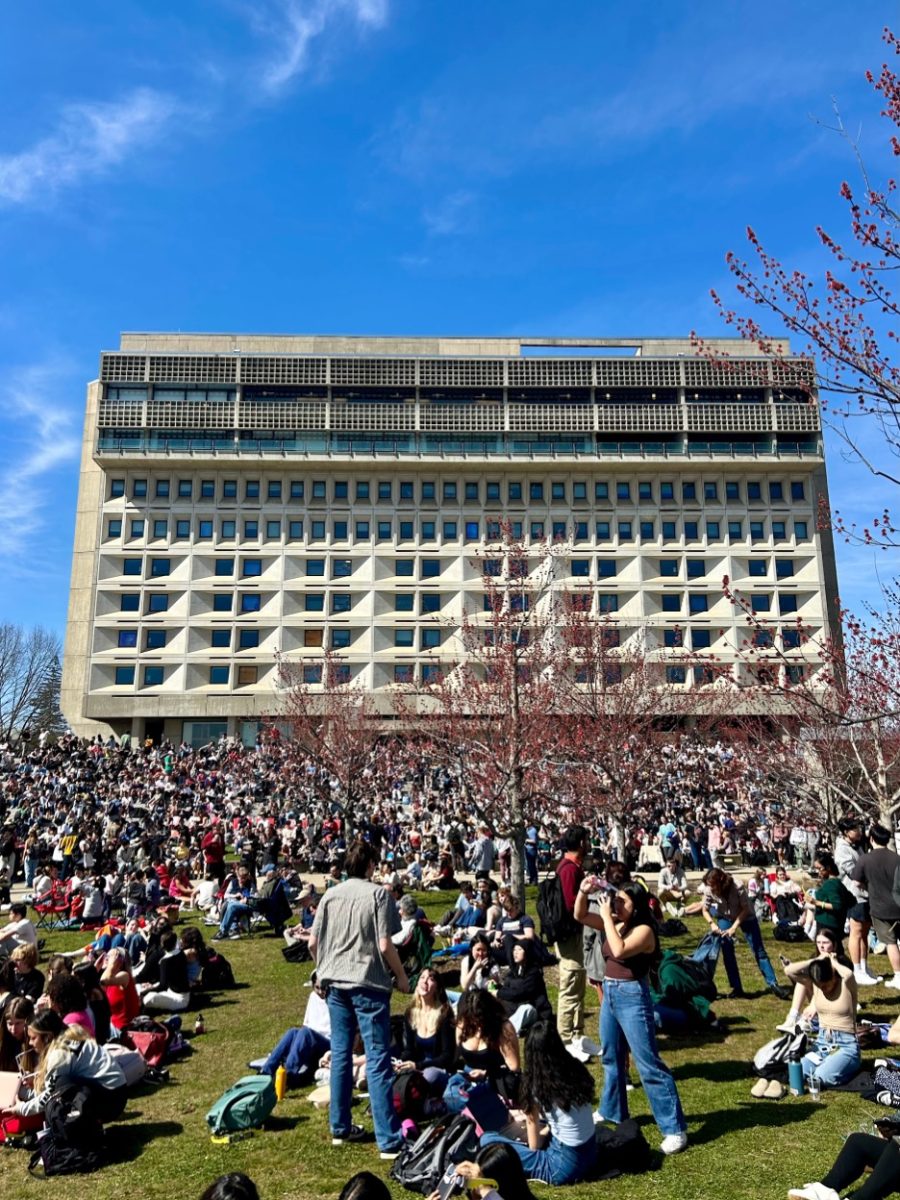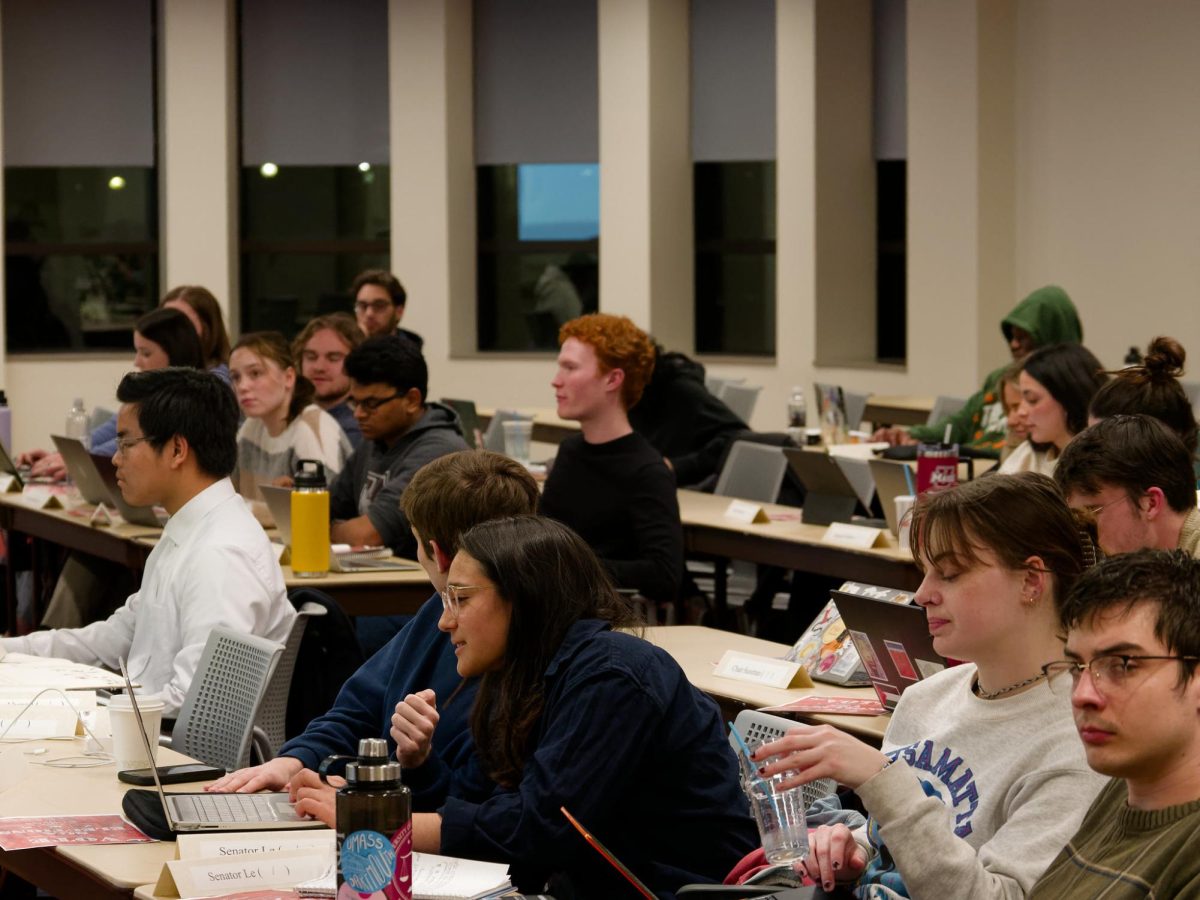
As Earth’s population grows and consumption increases, the planet must take steps toward becoming a more equitable and sustainable society, said University of Massachusetts professor Raymond Bradley.
“Much of the world is asleep on these issues and we have to wake up,” said Bradley – a distinguished professor of geosciences and director of the Climate System Research Center – during a lecture at the Student Union Ballroom yesterday.
During his talk, a Daffodil Lecture on Sustainability and the Environment, he stressed the need for the planet to come together to find equitable solutions to what he saw as one of the most pressing issues of our time: climate change.
Over the entire history of the planet, there has been slow but deliberate change, such as ice ages, said Bradley. But over the last one to two centuries, he continued, there have been rates of change at an astonishingly rapid pace.
He displayed a video of a rotating globe with lights indicating dense populations of urban centers and increasing threads of light connecting the world as time proceeded toward globalization.
The animated globe illustrated an explosion of growth after 1950.
He attributed the connecting strings of light to the Industrial Revolution in Northern England driven by coal and an increasing population.
Bradley then brought up other historical events that he saw as highly influential in population growth and environmental degradation.
He spoke about how James Watt’s invention of the steam piston engine, fueled by coal, led to a growth in coal factories. This attracted immigrants to these factories looking for jobs, which in turn led to urbanization, said Bradley.
In 1886, Karl Benz and Gustav Daimler introduced the first petrol-driven internal combustion engine, invoking a need for oil, said Bradley.
He said the current reality of a carbon dioxide level of 390 parts per million (PPM) was alarmingly high compared to historical levels. He said the sharp increase in carbon dioxide levels happened over the last 200 years and the level hadn’t been so high in a million years.
“No matter how many times people say this is not real, the facts speak for themselves,” said Bradley.
To illustrate the dangers of increasing carbon dioxide PPM levels, Bradley showed a picture of what the ocean floor would look like at 450-500 PPM. The picture showed little life and vegetation. He said life could not be sustained at such high levels, and predicted the environment is headed toward these PPM levels.
He then showed a chart displaying an increase in natural disasters. He split the natural events into categories: geophysical (volcanoes and earthquakes), meteorological (hurricanes and tornadoes), hydrological (floods) and climate (heat waves and droughts). Of the three categories, meteorological, hydrological and climate events are all considered weather.
He said 90 percent of the natural events in 2011 were weather-related and that most of these events were concentrated in North America and Europe.
And he warned about the dangers he saw in such rapid population explosion, stating he sees growth in human population from 7 billion to even as high as 10 billion within a lifetime.
“We cannot continue on the path we are on,” he said, “it’s simply unsustainable.”
Bradley spoke about what he saw as environmental pressures. He said one of these pressures is greenhouse gas emissions. The greenhouse gas emissions Bradley focused on were carbon dioxide, methane (found in irrigated land) and nitrous oxide (found in fertilizer).
He displayed several charts from the past two and half centuries leading up to 2000, outlining “The Great Acceleration,” an increase in factors from ozone depletion and carbon dioxide to fertilizer use and number of McDonald’s restaurants. In each instance, the chart showed a rapid increase after the 1950s.
And Bradley spoke about unequal distribution of resources. He displayed contrasting pictures – one of a young boy starved with protruding ribs reaching his hand out and the other of a young boy surrounded by McDonald’s wrappers on the other.
“It’s a depressing picture,” he said, “but we have to grapple it.”
Bradley ended the lecture by offering some possible solutions. He suggested creating management systems and changing how to measure countries’ successes.
Countries should be gauged “not in terms of consumerism, but in terms of overall well-being.”
He also urged action on the individual level – to get involved in politics, to vote and demand reform.
Nancy Pierce can be reached at [email protected].












